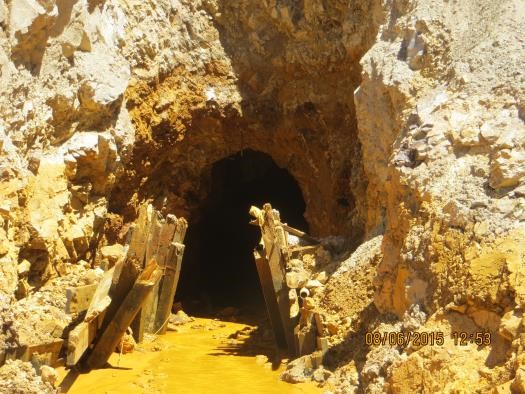

Southwestern Colorado residents still need to steer clear of the Animas River, after EPA workers accidentally triggered the spill of 1 million gallons of mine wastewater at the abandoned Gold King Mine near Silverton. The plume of muck got into Cement Creek, and then the Animas River.
Previously: EPA Admits It Triggered Million-Gallon Mine Waste Release
How did this happen?
Southwestern Colorado has a lot of abandoned mines and environmental officials have been in the area for years, working to clear toxic metals and acidic water left behind.
Though the spill happened on Wednesday, the EPA didn't tell anyone about it until the next business day. On Friday, the agency acknowledged that, and explained that they didn't quite understand what they were dealing with.
"We really believed it wasn’t as much water as we ended up seeing. As a result, some of our initial communications were not fully accurate,” said Shaun McGrath, an EPA administrator for the region.
What is the status of the spill Friday evening?
The mine is still leaking water, and that water contains lead, arsenic, along with cadmium, aluminum, copper and calcium and other pollutants. The EPA is building what's called a settling pond to capture the remaining discharge.
What's the effect of all this on human health?
For now, the health impacts of the spill aren't known. But the city of Durango has shut off water connections to the Animas river. They're asking residents to conserve water, as the city has a 10-day supply in reserve. And recreational boaters and anglers are not allowed on the river for now. Agricultural users in the area have also been asked not to water crops.
What happens next?
The plume will move downstream through New Mexico and Arizona, from the Animas, to the San Juan, to the Colorado rivers and eventually the Gulf of California. That's because things are still playing out with health, and fish and other aquatic life are affected, and downstream impacts are unknown.
New Mexico officials are angry the EPA did not inform them soon enough about the pollution floating downstream. The state's environment secretary, Ryan Flynn, said Friday that the agency downplayed the danger the contamination posed to wildlife, adding that potential harm can't be known until the contents of the wastewater and their concentrations are known.








